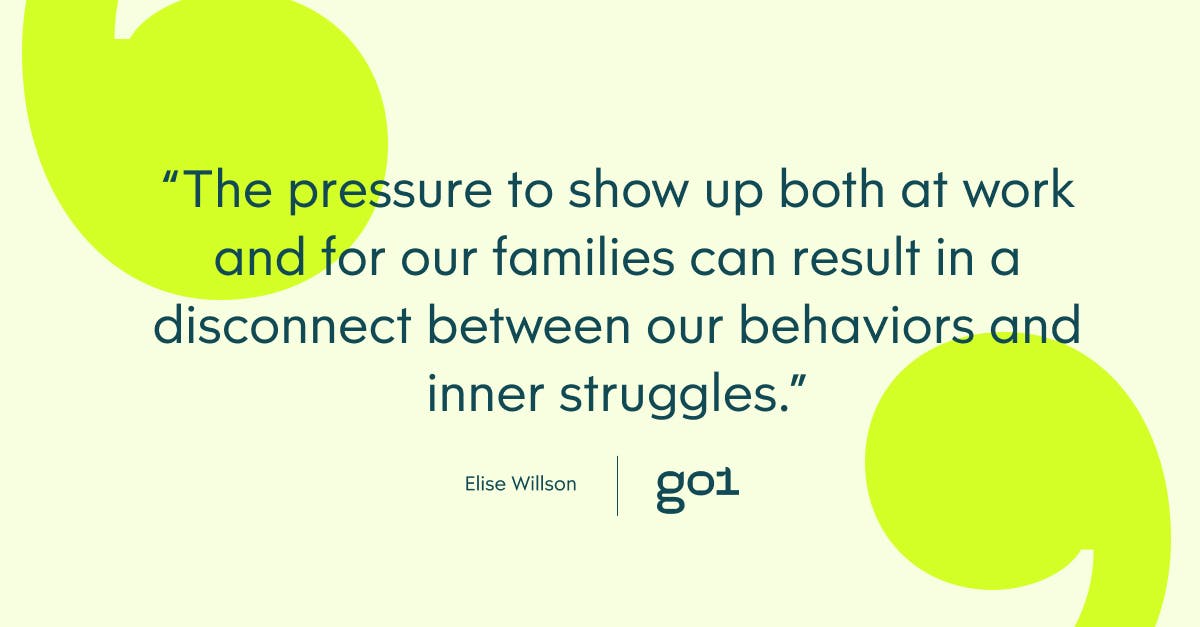Burnout as an occupational phenomenon
In 2019, the World Health Organization reclassified burnout as an occupational phenomenon, describing the syndrome as ‘resulting from chronic workplace stress that has not been successfully managed.’
Workplace stress is something we all experience, whether it's in the form of heavy workloads, tight deadlines or workplace culture, which can all contribute to us feeling pressured at work.
But when this stress becomes long term, and pointedly, unsuccessfully managed, we can arrive at the point of burnout. This point will look different individually, but commonly is identified with:
- A lack of energy
- Poor concentration
- Trouble sleeping
- Headaches
In a recent TED talk, Dr. Emily Nagoski and Dr. Amelia Nagoski simplified this by describing burnout as, ‘where you can show up for work, but you spend your whole day fantasizing about being at a different job.’
When burnt out, your work performance will often take a considerable hit, but along with your ability to care much about it.
Concerning figures show how prevalent burnout has recently become. A Gallup study of 7,500 full-time employees found 23% of them felt burnt out at work either very often or always, and an additional 44% reporting the feeling sometimes. That’s a staggering 67% of workers experiencing burnout at work.
With burnout comes detachment, or mental distance, from the role. This may be one of the strongest triggers for what’s been dubbed globally as The Great Resignation. 95% of Human Resource leaders are admitting that employee burnout is sabotaging workforce retention.
So with such high prevalence, what can we actually do to tackle burnout, as employees and leaders?

Recognizing burnout, and its triggers, as employees
With blurred lines between work and life, many of us have felt emotional demand and disruption around the clock for the past two years. The pressure to show up both at work and for our families can result in a disconnect between our behaviors and inner struggles.
Within crisis moments, many of us tend to push through emotional reactions and put our brave face on. This approach, particularly over a long period of time, can seriously diminish our psychological wellbeing and contribute to the risk of burnout.
In her TED talk, Dr. Amelia Nagoski noted that “one of the things that causes burnout is our inability to recognize the hard stuff welling up inside us.”
Beyond Blue, a Go1 mental health content partner, suggests tracking your mood to help identify what things at work are impacting your stress levels. Knowing what is contributing means you can then investigate strategies to help manage it.
Within the workplace, research has found some common factors that frequently correlate with burnout. These include:
- Unfair treatment at work
- Unmanageable workload
- Lack of role clarity
- Lack of communication and support from managers
- Unreasonable time pressures
Looking at each of these factors, ask yourself if any resonate with your current work experience. Have any of these resonated for an extended period, without signs of improved management?
Tracking or identifying these risk factors means you can now not only start implementing stress management strategies yourself, but also take your concerns to your team and leaders to assist in changes being made.

What can we do as leaders to address or prevent burnout within our team?
Stress may be present in every workplace at some level but it still poses a threat to employee health if not identified or managed properly. When it comes to burnout, the responsibility of prevention or recovery sits significantly with leaders, and particularly with direct managers.
When a workplace fails to manage the risk of burnout, its employees will either stop progressing or start looking elsewhere.
Managers should keep an eye out for some of these early signs of burning out, including:
- Changes in demeanor. Sometimes it’s little things but your team members may appear recognizably ‘off’.
- Body language (if you’re still seeing staff in person) can be a reliable indicator of mood.
- Changes in attitude towards work and changes in productivity can be signs that a team member has started disassociating from work.
If a staff member or colleague has a noticeable change in mood or seems to be struggling with workload, that’s a fair reason to check in with them. You may find they are navigating balancing general life stressors as well as work. However, while you help support their overall wellbeing, this can be the ideal time to ensure they are not experiencing any of the common burnout stressors described above, such as unmanageable workload or lack of role clarity.
Ignorance is not key here. Education around burnout, stress management and recovery support are the foundational steps towards leaders creating mentally safer work environments.
For the month of October, we will continue providing insight and content around mental health subjects and struggles within the workplace. To assist you and your team in developing a comprehensive workplace mental health plan, we have curated a free Managing Stress and Burnout playlist of learning resources within the Go1 platform.
The playlist includes learning content from Beyond Blue, Mind Tools, Mental Health Movement and other mental health providers. If you are already a Go1 customer, you can recreate this playlist in your own LMS or Go1 Platform. If you are not yet a customer, click on the link above to access the playlist. If you're interested in the Go1 Content Hub for your organization's wellbeing and L&D goals, please get in touch with us today.
Please remember, if you are struggling with your mental health and experiencing significant distress, we encourage you to reach out for immediate support.
Australia: Lifeline 131 114 or Beyond Blue 1300 224 636
USA: NAMI HelpLine 800-950-6264
UK: Samaritans 116 123 or Shout Crisis Text Line text ‘SHOUT’ to 85258
Global: United for Global Mental Health Regional Directory
For more insights, be sure to subscribe to the Go1 newsletter to stay on top of all the latest L&D trends. Or, you can book a demo today to find out how Go1 can help with your team’s learning needs.






